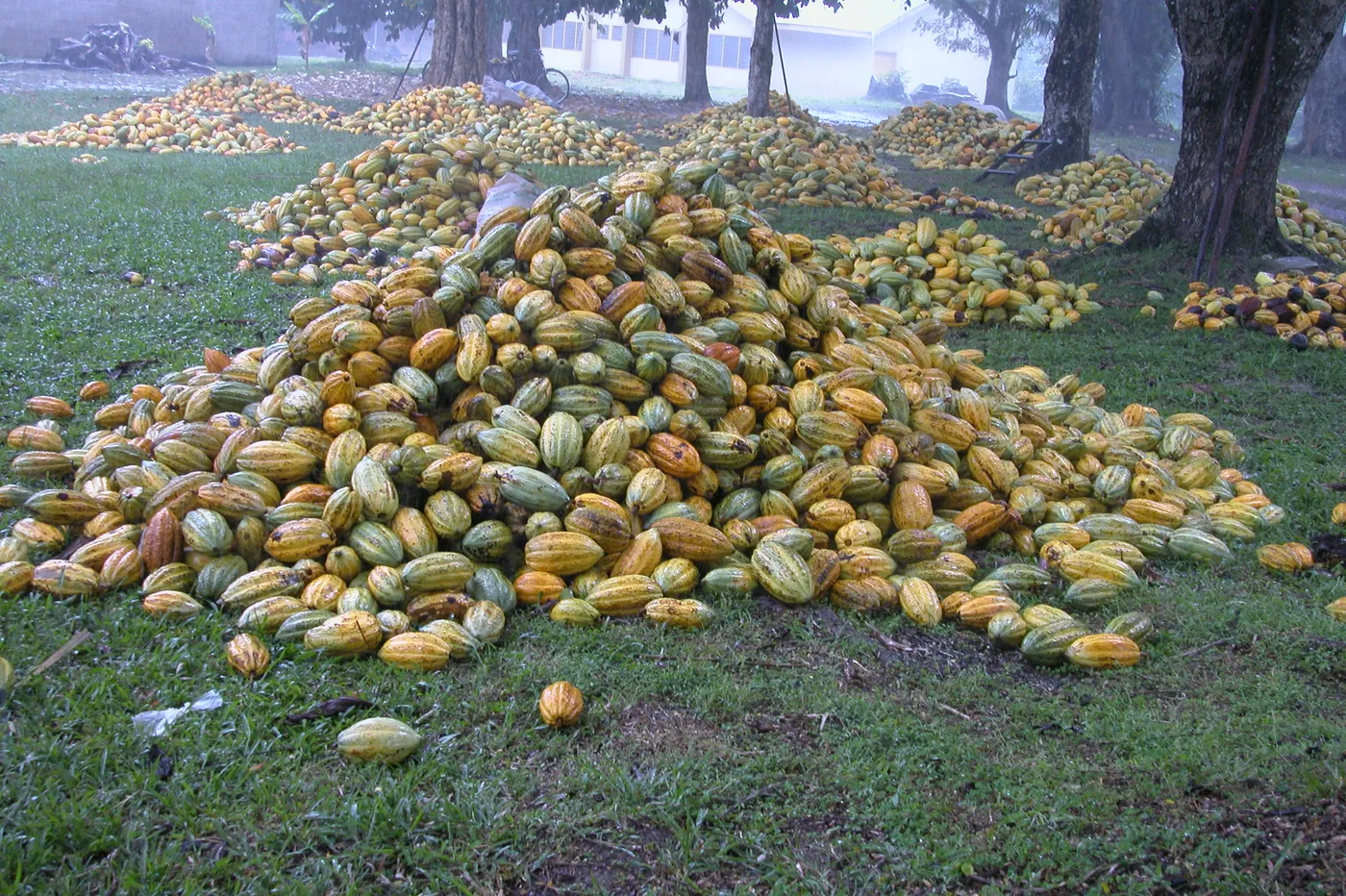According to the World Bank’s October 2024 Commodity Markets Outlook, although growing conditions in major cocoa and coffee regions are likely to improve, prices are expected to remain elevated by historical standards.
Cocoa prices fell by 20% in 2024Q3 but were still nearly double their level in 2023Q3. The good news is that more favourable weather conditions in West Africa are expected to see cocoa production rebound in the 2024-25 season.
The World Bank said cocoa supply conditions are expected to improve in 2024-25, especially in Cote d’Ivoire, where better weather across key production zones could boost output by as much as 15%. ‘Nevertheless, with limited supply increases anticipated from other regions, cocoa prices will remain elevated.’
After a projected doubling of prices in 2024, cocoa prices are expected to ease - by around 13% in 2025 and 2% in 2026.
However, World Bank analysts said that the return of unfavourable weather in West Africa is a key upside risk to this price outlook.
Ghana, the world’s second-largest cocoa producer, now expects output to recover to 650,000 tons this season, despite ICCO (International Cocoa Organization) predicting a figure closer to 500,000 tons.
According to the regulator, Le Conseil Cafe-Cacao, neighbouring Cote d’Ivoire (the world’s largest cocoa grower), has raised its production estimate to 2.1-2.2 million metric tons (mmt) from a June forecast of 2.0 mmt.
Global cocoa production output
In general, global cocoa production is estimated to have decreased by approximately 14% in the 2023-24 season, falling to 4.2 mmt from 4.9 mmt in 2022-23, mainly due to lower output in Cote d’Ivoire and Ghana, which account for almost 60% of global cocoa production
In a call to investors on Wednesday (6 November), Barry Callebaut CEO Peter Feld said the weather conditions in Africa are certainly better than they were a year ago, and the world’s largest cocoa supplier is seeing a significant improvement in last year’s harvest. However, it is still not back to the 2022-23 levels.

Feld also confirmed that he does not see cocoa bean prices returning to the lower levels of the previous season and said the company is in discussions with both governments to enhance small-holder farmer productivity by combating crop disease and enabling the sustainable replanting of cocoa trees.
A Forbes report said a changing climate in Cote d’Ivoire and Ghana enables mealybug populations to thrive in hotter and wetter weather. This is bringing a deadly swollen shoot virus that is decimating cacao trees. The National Oceanic and Atmospheric Administration (NOAA) estimates the virus has caused 200 million trees to die, forcing cocoa bean prices to rise.
NOAA also attributes the same climate change issues (greater heatwaves and stronger rainfall) to causing the spread of a fungus called black pod disease that also results in more dead cacao trees, Forbes reported.
La Niña outlook
According to the World Bank report, meteorologists estimate a 60% chance that La Niña will emerge during the Northern Hemisphere autumn and persist through January-March 2025.
This typically brings wetter-than-normal conditions in Australia, Southeast Asia, southern Africa, and northern South America, while causing drier weather in east Africa, the US Gulf Coast, southern Brazil, and Argentina.
‘This weather pattern is expected to ease upward pressure on the prices of some commodities in 2025—including cocoa, food oils, natural rubber, rice, and sugar— and could have an even greater impact if La Niña is stronger than the weak, short-duration pattern assumed in the forecast. However, if La Niña fails to materialize, these prices could exceed current forecasts.’
Fairtrade Climate Change Adaptation Plans
Fairtrade International said that due to the expanding consequences of climate change, many Fairtrade producer organisations have developed and implemented climate change adaptation plans to help strengthen production.
A new study, ‘Exploratory Study into Climate Change Adaptation Plans and Measures in the Fairtrade System,’ found that coffee producers have developed most climate change adaptation plans so far, representing 52% of the existing plans. This is likely because they became a core requirement in the 2022 update of the Fairtrade Coffee Standard.

According to the survey and interviews, developing climate change adaptation plans is helping to build farmer knowledge and awareness while also enabling them to take initial measures to strengthen production. The most common measures implemented include planting disease-resistant varieties, pruning and shade management, improving soil health, efficient water use, and integrated pest management. These have been validated elsewhere as effective in increasing climate resilience, which the study highlights through a literature review.
However, some cocoa, tea, banana, and sugar producer organisations have also developed their own plans to deal with higher temperatures, pests and disease, droughts, and water scarcity: for example, 18% of plans were created by cocoa producers, and almost 8% by tea producers.
Fairtrade International said: “As climate changes become more substantial, agricultural production could become more challenging or even unfeasible. Adapting to these impacts will require a broader set of measures, such as collective action between producer organisations to undertake more radical changes to their production systems and the institutions supporting them.”

Cop29
Speaking ahead of COP 29, the UN’s environment chief, Inger Andersen, said that “huge cuts” in carbon emissions were needed to “steer the world off a path of catastrophic temperature rise”, in a report urging countries to act at the climate summit in Baku, Azerbaijan, which takes place from 11 to 22 November 2024.




